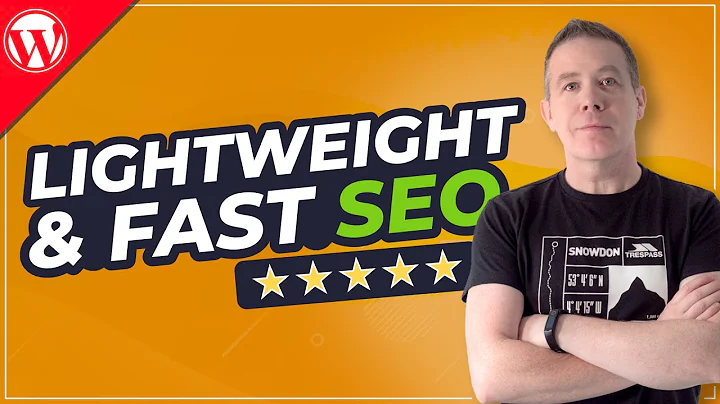Cracking the Code of Mixed SERPs: Understanding Fractured Search Intent
Table of Contents
- Introduction
- Understanding Fractured or Mixed Intent
- Importance of Search Intent in SEO
- How to Interpret Intent for SERPs
- Types of Search Intent
- Informational Queries
- Navigational Queries
- Commercial Investigation Queries
- Transactional Queries
- Analyzing Organic Search Results
- Examining SERP Features
- Evaluating SERP Stability vs. Volatility
- Challenges with Defining Intent
- The 3 Cs of Search Intent
- Practical Strategies for Creating Relevant Pages
- Conclusion
💡 Highlights
- Mixed or fractured search intent can make it challenging to rank in search engine results.
- Understanding search intent is crucial for effective SEO strategies.
- Various types of search intent include informational, navigational, commercial investigation, and transactional queries.
- Analyzing top-ranking pages, SERP features, and stability vs. volatility can provide insights into user intent.
- Defining strict criteria for intent is difficult due to the complex nature of search results.
- Focus on creating high-quality pages that align with the dominant intent of users for better rankings.
🔍 Introduction
When it comes to search engine optimization (SEO), one of the most important factors to consider is search intent. Search intent refers to the underlying reason behind a searcher's query. However, there are occasions when people have different intentions behind a search query, resulting in fractured or mixed intent. This can make it challenging for website owners to determine the type of content they should create in order to rank well in search engine result pages (SERPs).
In this article, we will explore the concept of search intent and its significance in SEO. We will delve into different types of search intent and provide strategies for interpreting and handling mixed or fractured SERPs. By understanding search intent and implementing effective strategies, you can optimize your website to better align with user expectations and improve your chances of ranking higher in search results.
🔎 Understanding Fractured or Mixed Intent
Fractured or mixed intent occurs when a search query can be interpreted in multiple ways, leading to various results that cater to different intentions. For example, when someone searches for the term "apple," they could be looking for information about the fruit, the technology company, or even a recipe involving apples.
This presents a challenge for search engines like Google, as they strive to provide the most relevant results for each query. To address this issue, search engines employ dominant, common, and minor interpretations to better understand user intent. However, deciphering search intent accurately can still be complex, which is why website owners must know how to handle mixed or fractured SERPs.
📈 Importance of Search Intent in SEO
Search intent plays a crucial role in SEO as it directly influences the type of content that websites need to create in order to satisfy user expectations. Understanding search intent allows website owners to tailor their content to match what users are searching for, ultimately improving their chances of ranking higher in search engine results.
When search intent is clear, SEO becomes relatively straightforward. For example, if someone searches for "crockpot recipes," it's evident that they want to find pages that provide lists of slow cooker recipes. In this case, website owners can focus on creating recipe-based content to compete for that search query. However, when search intent becomes mixed or fractured, it becomes tricky to determine the type of content that will satisfy user needs.
In the next section, we will explore different types of search intent and discuss how website owners can interpret and handle these complexities to optimize their content for better rankings. 🌐
✨ How to Interpret Intent for SERPs
Interpreting search intent for SERPs requires a thorough understanding of the different types of search intent commonly found in search queries. By categorizing search intent into specific buckets, website owners can gain insights into the types of content they should create to meet user expectations.
1. Types of Search Intent
There are four primary types of search intent that SEO professionals generally categorize queries into:
-
Informational Queries: These are search queries where users are looking for information and want to learn about a particular topic. Examples of informational queries include "crockpot recipes" or "what is SEO."
-
Navigational Queries: When someone wants to find a specific website or place to go, they use navigational queries. Typically, users search for a particular brand, website, or specific location. Examples of navigational queries include "Google Analytics login," "Amazon garden hose," or "Mexican restaurant near me."
-
Commercial Investigation Queries: These queries indicate that searchers are in the market for a product or service but haven't made a final decision yet. They may be looking for product reviews, comparisons, or "best of" lists. Commercial investigation queries are common when users are considering their options before making a purchase.
-
Transactional Queries: Transactional queries are indicative of users who are actively searching for a specific product or service with the intent to make a purchase. These queries often include phrases like "buy," "purchase," or "order." An example of a transactional query is "buy optimum nutrition protein powder."
Understanding the different types of search intent helps website owners determine the most appropriate content to create for a specific query. However, it's important to note that search intents can overlap, making it more challenging to categorize intent accurately.
2. Analyzing Organic Search Results
To gain insight into search intent, website owners can analyze the top-ranking pages for a target query. By examining the content and structure of these pages, you can infer the type of intent they are trying to serve.
For example, if you search for "crockpot," the intent becomes mixed. Some people may want to visit the manufacturer's website, buy a crockpot online, visit a store nearby, or find recipes for slow cookers. By looking at the top-ranking pages for this query, website owners can identify the dominant intent.
3. Examining SERP Features
Apart from organic search results, SERP features also provide valuable clues about search intent. SERP features include local packs, knowledge panels, people also ask, ads, and more. These features often align with specific intent types and help paint a clearer picture of how search engines like Google perceive user intent.
For example, if the majority of websites appearing in the search results for the query "raleigh SEO" are homepages and landing pages from SEO agencies selling SEO services, it suggests a commercial and transactional intent. However, if there is a knowledge panel for a specific company associated with the query, it may also indicate a navigational intent.
Analyzing both organic search results and SERP features collectively helps website owners gather insights into the dominant intent behind a search query.
4. Evaluating SERP Stability vs. Volatility
Another factor to consider when interpreting search intent is the stability or volatility of a SERP. Stable SERPs indicate that top-ranking pages consistently hold their positions over an extended period, suggesting clear search intent. On the other hand, volatile SERPs experience more frequent changes, making it harder to define search intent accurately.
A stable SERP can be advantageous as it indicates clear intent and provides predictable ranking opportunities. However, competitive queries may also present a greater challenge. Volatile SERPs, while potentially easier to rank in, come with more uncertainty as intent can fluctuate, making it challenging to maintain rankings consistently.
To determine SERP stability, website owners can analyze position history graphs for specific queries. Consistently high-ranking pages indicate stable intent, while frequent fluctuations suggest a more complex and uncertain intent.
🔍 Challenges with Defining Intent
Attempting to categorize search intent into specific buckets has its challenges. Search engine result pages (SERPs) are complex and can often contain a variety of combinations that don't fit into traditional intent categories. Additionally, SERPs can significantly vary depending on location and personalization. As a result, different individuals may interpret intent differently.
At Ahrefs, we have developed the "3 Cs of search intent" methodology. This approach focuses on serving prospects and existing customers by creating pages that align with the dominant intent recognized within the search results. Instead of overcomplicating matters by trying to fit search queries into rigid intent categories, focus on understanding user needs and creating top-notch content specifically tailored to those needs.
💡 Practical Strategies for Creating Relevant Pages
To optimize your website for search intent and improve your chances of ranking, consider the following practical strategies:
- Research and analyze the top-ranking pages for target queries to identify the dominant intent and structure your content accordingly.
- Incorporate relevant keywords, phrases, and context that align with the identified intent.
- Aim to fulfill the specific intent through comprehensive content that provides valuable information, addresses user queries, and offers relevant solutions.
- Pay attention to user engagement indicators such as bounce rate, time on page, and click-through rates. Optimize your content to meet user needs and expectations.
- Continually monitor and analyze SERP features to better understand search intent trends and adapt your content strategy accordingly.
- Regularly review and update your content to ensure it remains relevant, accurate, and aligns with the evolving search intent.
By following these strategies, you can create compelling and relevant content that not only satisfies user intent but also improves your website's visibility and rankings in search results.
🏁 Conclusion
Understanding user search intent is a critical aspect of SEO. By interpreting intent correctly, website owners can create relevant, high-quality pages that satisfy user needs, resulting in better rankings and increased organic traffic. While search intent can be complex and multifaceted, focusing on the dominant intent and aligning your content strategy accordingly is crucial for SEO success. Instead of spending excessive time trying to define rigid intent categories, concentrate on creating valuable content that serves your target audience effectively. By doing so, you will be well-positioned to achieve your SEO goals and drive organic growth.







